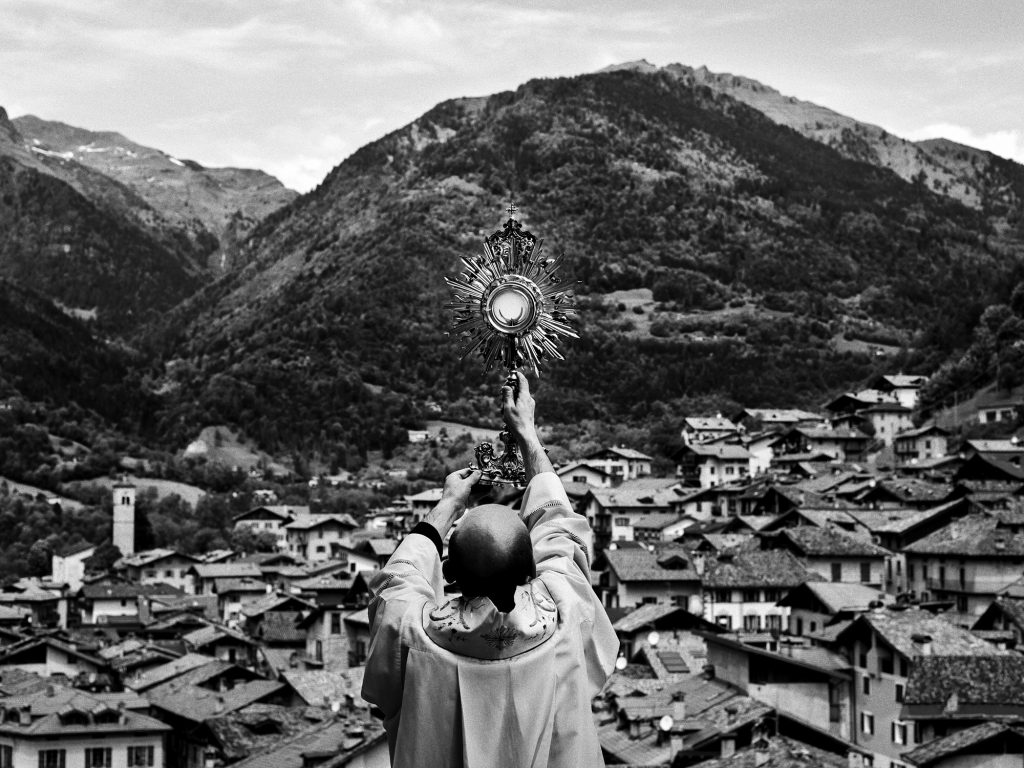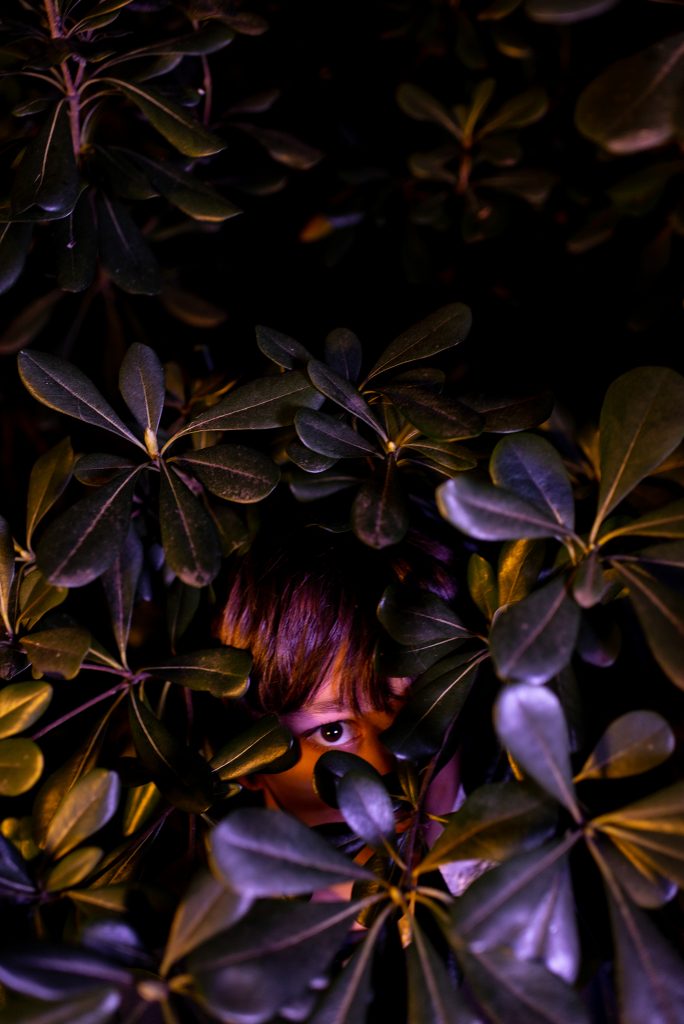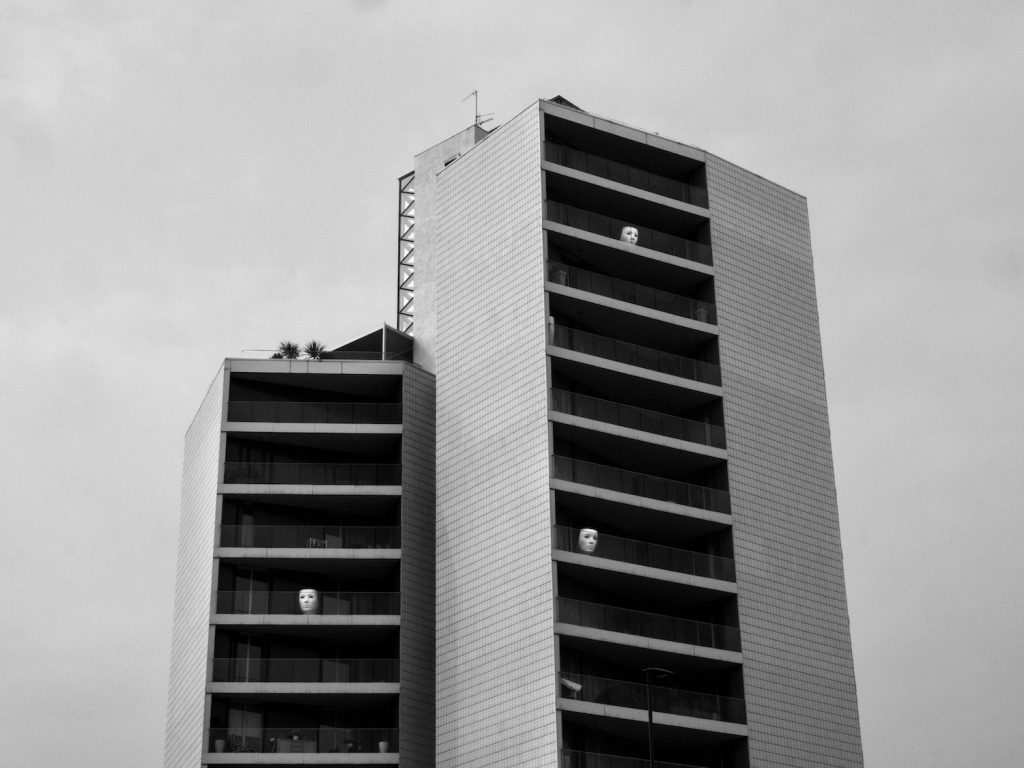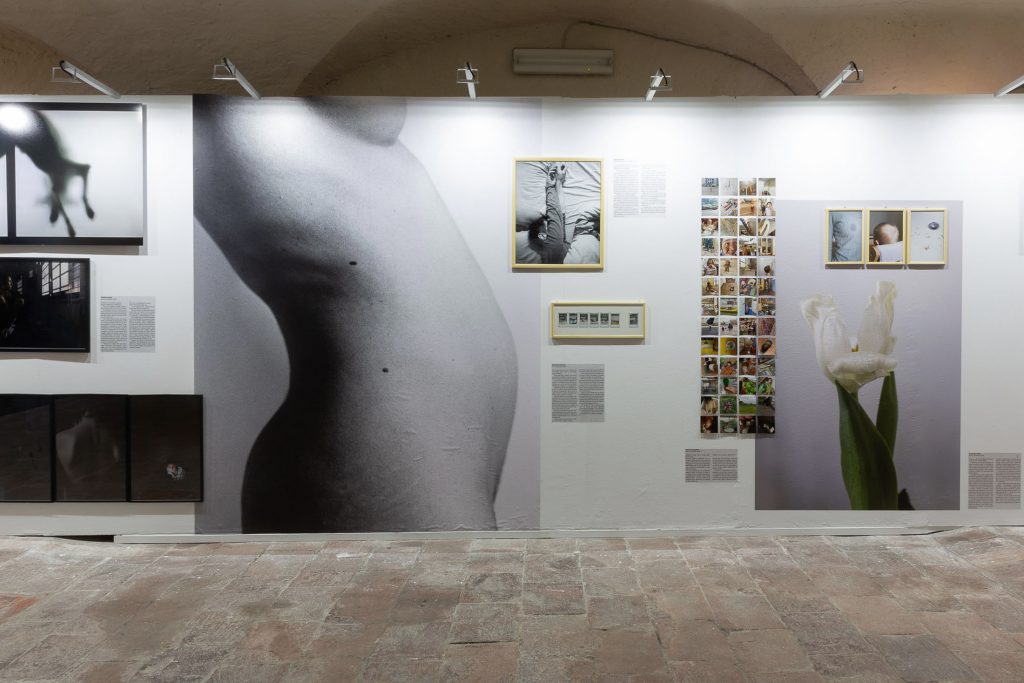by Chiara Ruberti
_
Among the many projects produced in the first months of the pandemic, there was one that I followed with great interest right from the start for its horizontal and participatory approach, for its heterogeneous and broad vision, for the ability to look at the public and social dimension as much as at the more private and intimate one. Archipelago-19 with what we have defined as “a constellation of images that is an active and alert witness” has managed to convey a complex, articulated and precious portrait of the pandemic. These are the reasons why we chose to invite Arcipelago-19 to curate an exhibition about the pandemic for the 2020 edition of Photolux, originally scheduled to open in November 2020.
Giulia Ticozzi is one of the members of the informal group that gave birth to Arcipelago-19 and the curator of the exhibition The beginning of the future, which finally opened on May 28 and can be visited in Lucca (Villa Bottini) until August 22. Let’s explore some issues related to the project and the exhibition with her.
How did the idea of Archipelago-19 come about?
The idea was born immediately after the beginning of the 2020 lockdown. We were at home or working on the frontline and we needed to hear from each other, have conversations, just say hi and, basically, we had a strong desire to just ask “how are you?”. Us always being online led to the urgency to “do something”: we had the opportunity to have a newly found time to discuss how photography could tell all this. We have built a visual mapping, a story capable of explaining the territory and at the same time propose a collective vision that is never static or trivial, far from stereotypes. We first chose to open an Instagram account (@Arcipelago_19). It was fast and effective because the two-way strength of the social network is perfect: I participate but I also observe. IG is a tool to show but also to monitor what is happening.
I like to say that Archipelago-19 is not a collective but a “collector”. The project was born in a spontaneous and free way, an idea very far from a studied planning. It will keep going as long as there are proposals and participation. Vice versa it doesn’t work, it doesn’t live. As in a particular organism, Arcipelago sometimes resembles an ouroboros (the snake that eats its tail and creates a circle that symbolizes the infinite, the eternal) but at the same time it is an organism supported only thanks to the new energies that come from outside. In fact, the name is representative: Arcipelago, a place that exists only thanks to the elements that compose it, namely the islands. For us they are the photographers who wanted to share a piece of their journey with us.
So the group has grown and now, from the four people we were in the beginning we have become many more. The idea is to be involved in the various stages of the creative process. Not just the photographs but everything that revolves around the conception of a project, its communication, the various collaborations, the choice of images. Then we spend time together. A lot online and sometimes, when you can, somewhere.

It was the beginning of the summer of 2020 when we spoke for the first time and we started discussing the possibility of creating an exhibition. The reassuring feeling that we were past the worst and that the pandemic would loosen its grip was in the air, Photolux together with the Archivio Fotografico Lucchese “A. Fazzi” had launched a public call a few weeks earlier addressed to the citizens of Lucca asking to contribute with a donation to the establishment of the Covid-19 Archive Fund, in the belief that the collective memory of this extraordinary event should be preserved. With the intention of opening the Archive to a dimension that was not only local but at least national, we thought it was necessary to enrich the collection with a nucleus of author images that would tell the course of the pandemic along the entire peninsula and through the look of professional photographers. The idea was then to bring a portion of that narrative universe built by Arcipelago-19 on display in Lucca and to acquire an image for each author involved in the Covid-19 Found of the Archive.
What was the thought behind the selection of authors and images for the exhibition? How did you build the path that links so many works so different from each other in language and content?
The images that make up the exhibition L’inizio del futuro [The beginning of the future] were selected from a series of photographic works collected during the first lockdown. We have “dug” so much into the projects that have come to us. We have seen so many beautiful things and had to discard less interesting things. It wasn’t easy to process. In the exhibition this had to be systematized, it had to become representative for the process in general and it seems to me that there has been a very important result: the authors have diluted. No one in particular emerges but one has the feeling that there is a multiple, fluid author. Nobody excluded. Like in an Arcipelago. Then, if you look carefully, the specificities emerge.
I would also like to specify that the exhibition was curated in collaboration with Max Cavallari but that, in general, we all do a little bit of everything. Also in this case the choices and the comparison have always been put in the middle of the discussion. For me it is very important, often the process tells much better the philosophy of a project.

The issues addressed are many. In fact, given that the theme is Covid, and since Covid has changed all aspects of our existence, the themes coincide with life and therefore are many. While there are stories of illness, treatment, mourning and the experience of empty cities, mountain valleys hit hard by the virus and growing tensions within society, there are also tales of solidarity and mutual support. Other authors, on the other hand, tell about people isolating in their homes: many have rediscovered the faces of those next to them, their families, neighbors. “The other”, almost never newsworthy, here becomes part of the basic aspects of the human being: the body, relationships, intimacy.
Many authors approached the rediscovered relationship with nature, which today is the only solution to a lifestyle that is too violent and exclusionary and which tells of centuries of behavior that has led human beings to a continuous clash with it. Many others have represented this passage and the attempt to react with new forms of work and sociality: a documentation of which we will understand the value in future years, as has always happened in the great historic moments.
In the exhibition we collaborated with Cesura, a collective that in recent months has dedicated part of its work to these issues. As “collectors” of images we thought it was an essential testimony, both during the first months by publishing some of their photographs on our feed and now, on the proposal of Marco Zanella, a member of Cesura, we thought that a good way to show this narration was to present a video installation Scherzo in tre tempi. A work that investigates the relationship between show and spectator, triggering a short circuit that pushes the visitor to question the condition of spectator.

The course of events forced us to move and reprogram constantly: the central core of the exhibition remained the original one, already entirely produced in November, but we left an open wall, at the end of the path, so that it could contain something closer to the moment when we would finally be able to open the exhibition.
Do we want to explain the final choice?
We wondered a lot about how to keep the exhibition “updated”. First, we thought to keep the last wall clear until the very last moment to have one more chance closer to the opening. At some point we had to choose. The fear of yet another postponement, of a cancellation, something that we have learned to live with in everyday lives, had made us loose sense a little. What is the last photo that “deserves” this position? That was not a correct question. Instead, asking yourselves “What do we want to tell?” helped us to leave an open ending dedicated to the narration of the exhibition itself. The work is in fact made up of a series of pages/photocopies that trace the different moments of the production of the exhibition. The visitor sees the phases, the difficulties, the anger, the expectations, the questions we asked ourselves during the whole journey. This is also a story about the pandemic.
Arcipelago-19 is an open project, can you tell us about the latest ideas and ongoing initiatives?
For some time, Arcipelago has wanted to leave the digital world to find ideas and languages that are closer to the real and “material” world. First of all, we have created a series of publications that have allowed, on the one hand, to finance the work of those who participate with their own photographs, and on the other to make the project known outside a specific circle dedicated to photography. Then, since we first met in person (after a few months, when in the summer of 2020 we were able to physically meet), the need for a collective project dedicated to those who were healed arose spontaneously. For the anniversary of the first year of work with the #antibodies project, we created a billboard campaign: at the same time, in several cities, we made sure that Arcipelago appeared on the streets and among people.
We are now working on the Italian summer. We imagine it will taste a little different. We have not emerged from the pandemic but we behave as if we were, we think about holidays but many people live in a very serious crisis, there are social tensions. What is the state of the country? What kind of summer will it be? To answer this question, we decided to tell the multiple points of view on the upcoming summer months and entrusting the language, style, content and cut of the visual narrative to the photographers of the Archipelago.

It was wonderful to enter the walls of an exhibition again, to think and sweat. Thank you! It was wonderful to meet some of the islands of the Archipelago, talk about the exhibition, the works and that priceless feeling of being together again. Thank you!
These beautiful energies inhabit the exhibition path, they tell us about the vital function of art and the work of culture that become antibody and collective memory, as we have repeatedly told each other.
It is true, if we consider art in general (including, obviously, photography) a place where relationships are important, whatever they are – between people, between work of art and viewer, between artist and environment – then yes, the idea of the exhibition, Arcipelago and the collective work satisfy that vital and necessary need, that urgency that is intellectual but also physical. After a completely digital birth, every real and practical “exit” is capable of triggering new perspectives and ideas. It is nice to meet up, to work together, to shake things up.
L’INIZIO DEL FUTURO
curated by Giulia Ticozzi and Arcipelago-19
with an audiovisual installation by Cesura
Villa Bottini
via Elisa 9, Lucca
May 28 – August 22, 2021
Friday, Saturday and Sunday 10:00 am – 7:30 pm
July 2021




